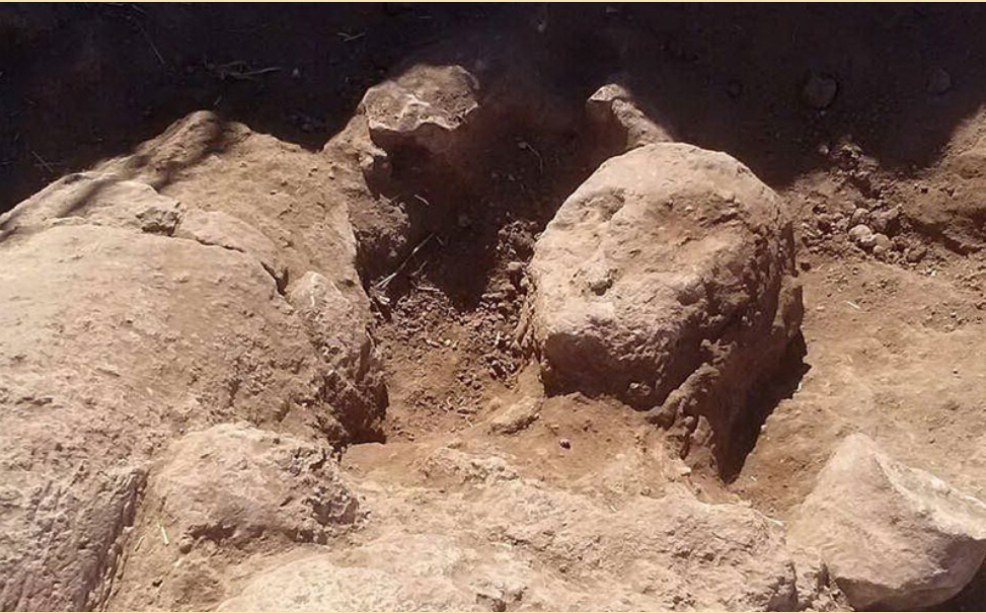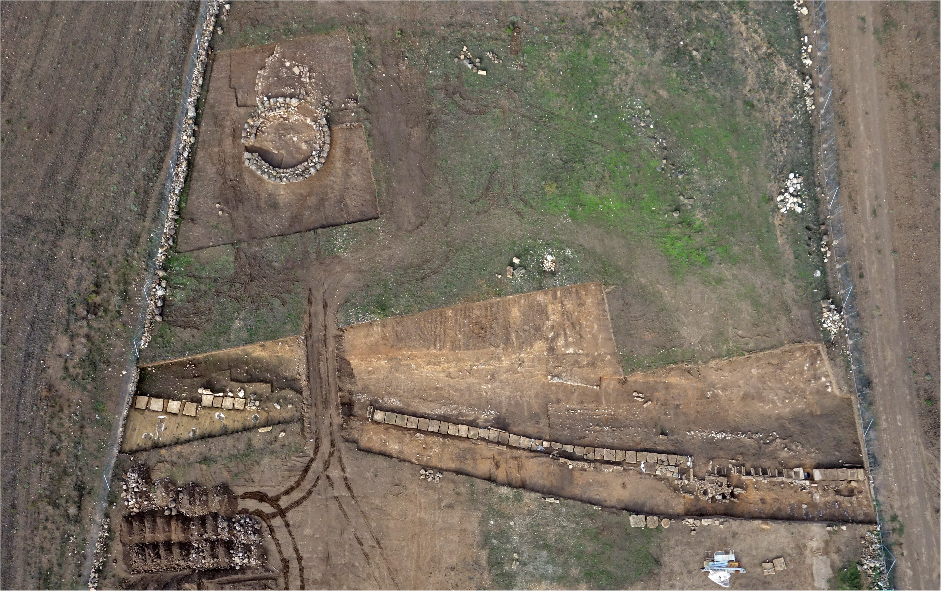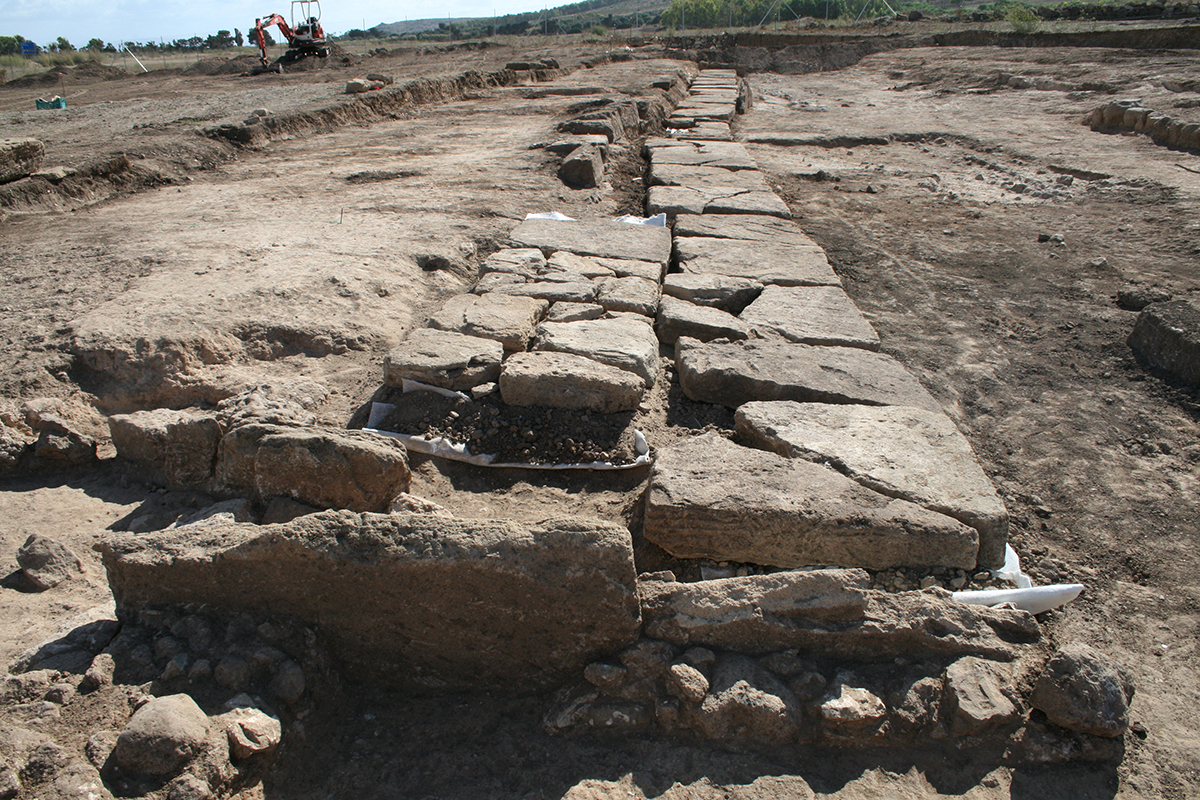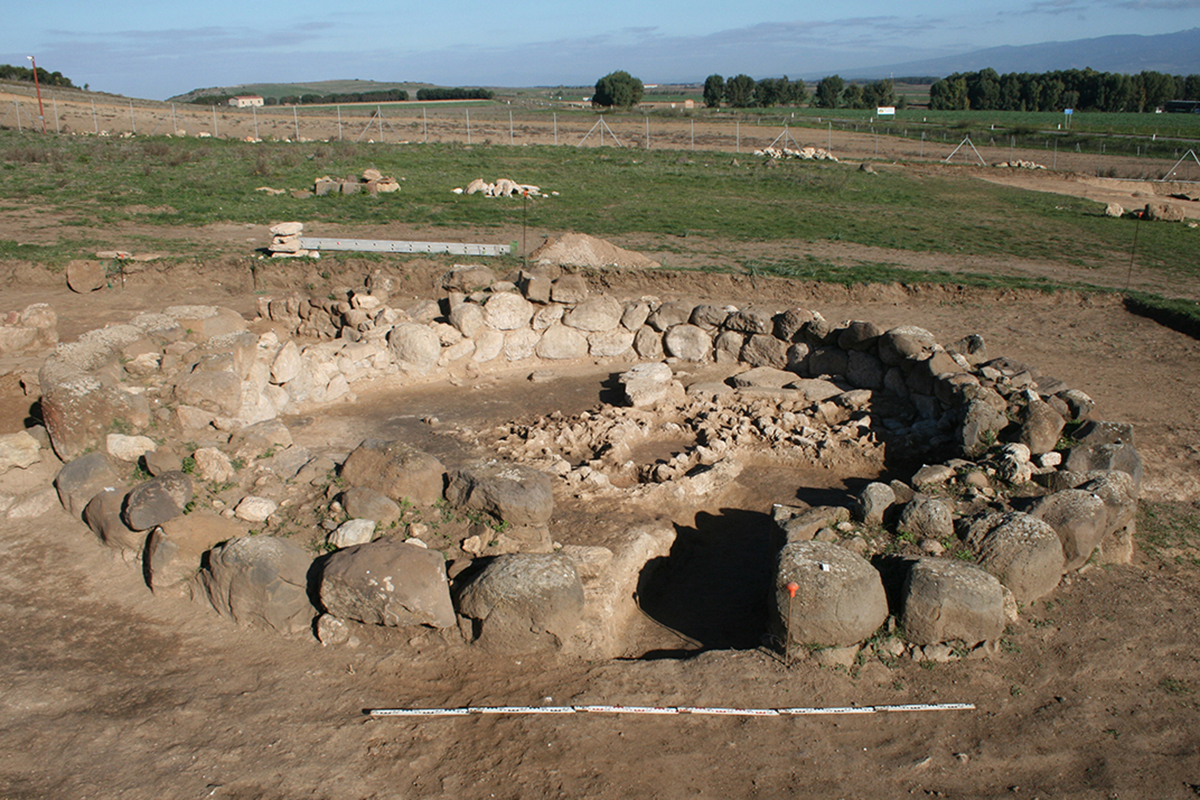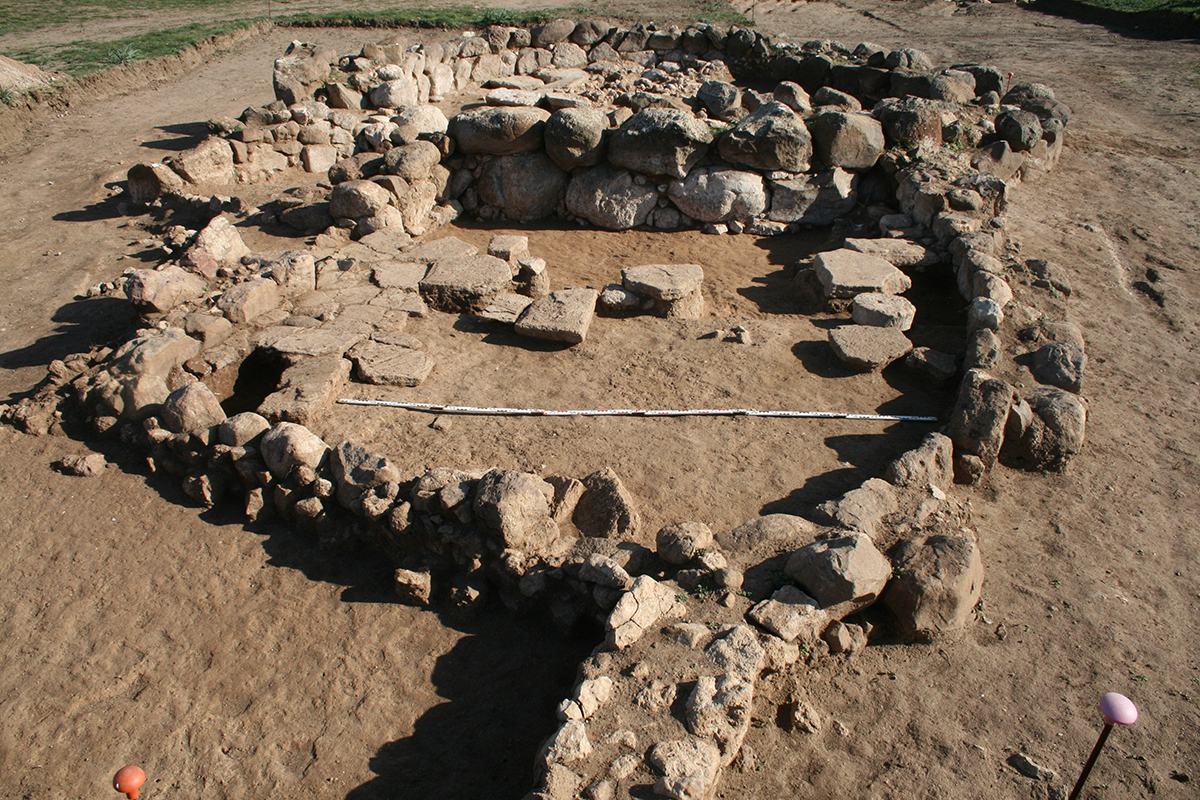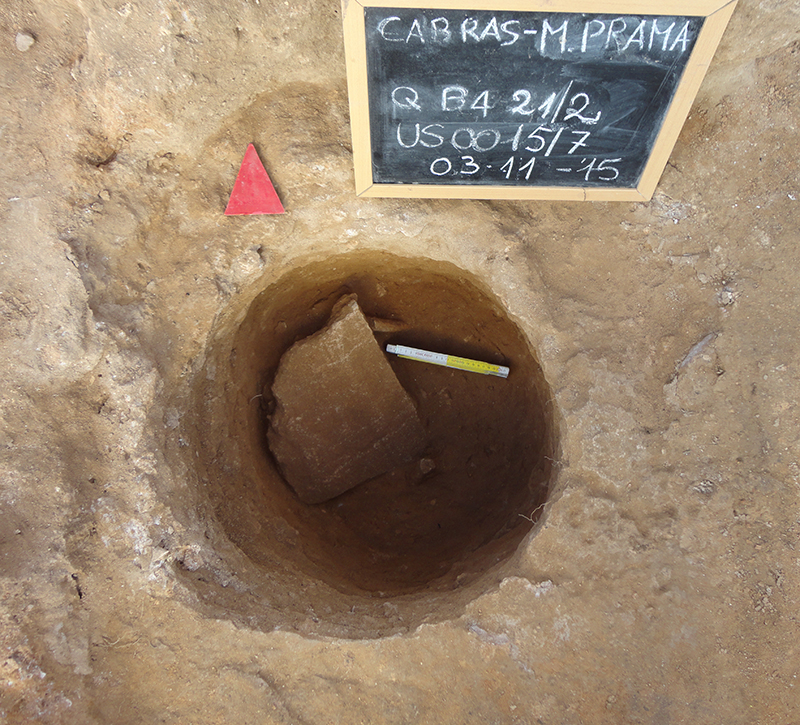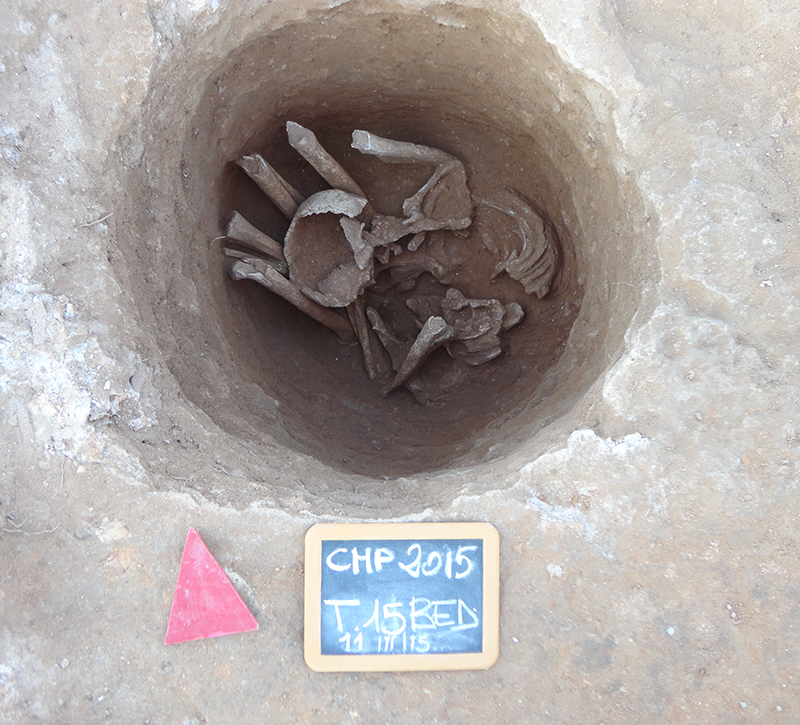The 2015-2016 excavations
In the period between May 2015 and December 2016 the Superintendence, under the scientific direction of Alessandro Usai and with the collaboration of Antonio Vacca, Franco Campus and Silvia Vidili, a new excavation campaign was started. The aim was to restore and recover the trenches of the old Bedini-Tronchetti excavations, widen the research area extensively towards the mountain, investigate the remains of some partially visible structures, analyse the organisation of the area around the necropolis and plan for future research programmes.
The campaign achieved its first goal, which was to recover and restore the entire long trench opened between 1975 and 1979, which had been backfilled in the 1980s.
The old trench was joined to the 2014 trench and thus the funerary complex crossed in its entirety the land owned by the Confraternity of the Sacred Rosary from south-south-west to north-north-east for an overall length of about 70 m. The excavation of the necropolis explored by Bedini was extended and deepened, thus leading to the discovery of at least 22 new tombs, half of which belonged to an intermediate pit type partially made of stone and with covering slabs of various shapes.
Other probable simple pit tombs were discovered in the strip to the east of the necropolis excavated by Tronchetti. In the “road” to the west of the Bedini necropolis, excavation revealed a further short stretch of dumped sculpture fragments, which had not been touched by either Bedini or Tronchetti. Once again, no element discovered at the site clarified the original position of the sculptures.
The investigation also covered the strip to the west of the necropolis, at the foot of the Mont’e Prama hill; this included the full excavation of the great round nuragic structure (building A) and of a small adjacent Nuragic building (building B).
Building A, perhaps originally used for ceremonial functions, was renovated in the nuragic period, then emptied and occupied in the punic period. It lies about 20 metres west of the tombs excavated in 2014; it is circular in shape, it is quite large and sturdy, and is made from large and medium-sized basalt blocks. At the present time it is not possible to determine the construction period of the building.
Building B, on the other hand, of which no remains were visible above ground before the excavation, is backed against building A from the west; it is much smaller than the previous one, of irregular trapezoidal shape, with a convex southern side. Built and used in the Nuragic age, it was not reoccupied in the punic age, preserving the nuragic stratification of the early iron age.
The archaeological finds include ceramic materials and a bronze dagger, fully framed in the cultural context of Oristano’s early iron age documented in Mont’e Prama.
Thus “present investigation programmes are aimed not at finding other sculptures but at extending the excavation area to clarify the organisation of the site and interpret its history over the long period running from the initial construction of the necropolis up to the development of the sculpture complex, and then on to its destruction. An attempt will be made to propose reliable hypotheses, although still to be verified and specified, on the relationship between the sculptures and the necropolis and on the existence of the supposed temple or sanctuary and other spaces or buildings with different functions” (Usai 2015, p. 87).
The tombs
In addition, 28 tombs were identified, of which 6 were systematically excavated: these are three tombs covered with a quadrangular slab and three pit graves of an older type. The excavation and the analysis of the graves were carried out by anthropologist Ornella Fonzo. The area involved extended the alignment to the north and east of the so-called Bedini necropolis. The investigations essentially confirmed the hypotheses previously made in the study of the remains of the bodies unearthed during the excavations of 1975-1979 and 2014.
The study of the finds recovered in the 2015 excavation has therefore allowed us to verify and confirm the conclusions drawn from the analysis of the finds from the previous excavations, enriching them with new elements.
In particular, the method of deposition identified in the slab-covered tombs was confirmed: the deceased were placed seated at the bottom of individual pits, generally with their backs facing east. It has not been possible to reconstruct the original orientation of the face because, as the fleshy parts decomposed, the skull fell down. The legs were always sharply bent, with the knees parted, pointing upwards, and the feet close to the pelvis and close together. The arms were also bent, with the elbows more or less distanced from the torso and the hands folded in front.
As for the oldest pits, however, the 2015 excavation revealed that the deposition type differed from the previous one in terms of the position of the lower limbs. It should also be noted that the bodies were buried in a position such as to occupy the smallest possible space, due to the small amount of space within this type of tomb. The deposition methods for this type of grave are not yet clear.
From the point of view of anthropological analysis, it is very interesting to note that the evidence seems to confirm that the necropolis was used as a burial site almost exclusively for males, including young adults and adolescents.
A further observation is the considerable difference in the degree of wear between the front teeth, which are very worn, and the back teeth: this difference has been explained by the scholar as a consequence of certain dietary habits or of the use of the teeth for other purposes, e.g. as tools to tighten, block or soften.




